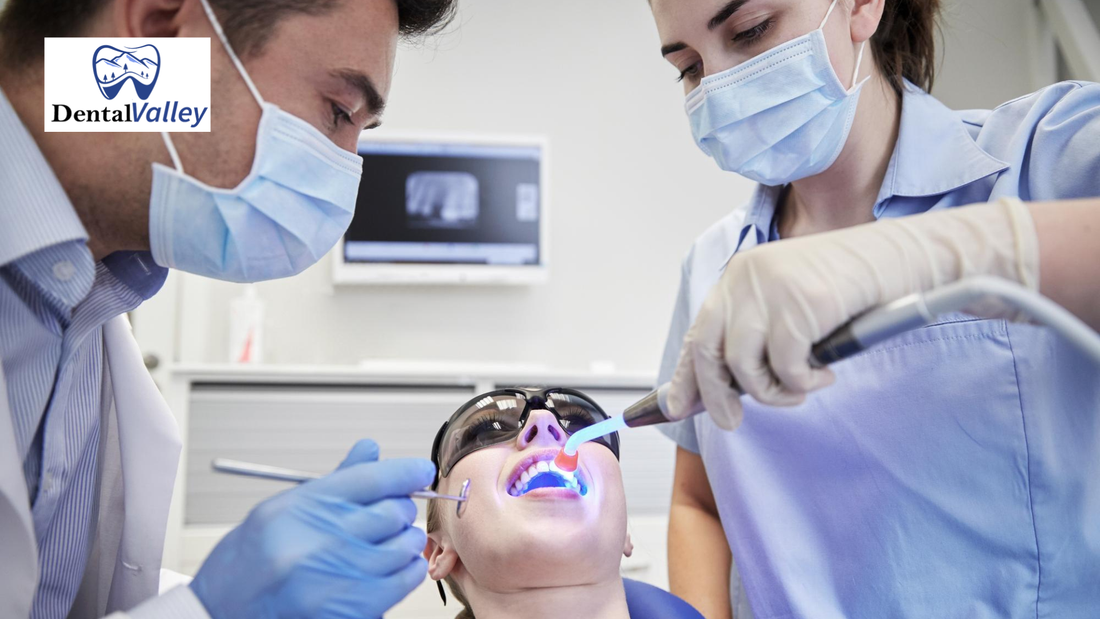Precision, timing, and calm control defines a great implant surgery. Pro Dentists don’t just rely on skill they rely on well-planned workflows.
A structured implant workflow ensures fewer surprises, smoother coordination, and predictable patient outcomes.
This guide gets you through every step of building a stress-free, efficient dental implant workflow, from pre-op planning to final prosthetic restoration, helping your practice save time, enhance precision, and reduce procedural fatigue.
The Importance of Workflow in Implant Dentistry
Efficient workflows are at the core of successful implant surgeries. When systems are clear, every member of the surgical team knows their role, from component preparation to implant placement.
A streamlined sequence not only safeguards procedural accuracy but also reduces risk during critical phases like drilling, insertion, and restorative connection.
Clinicians who adopt defined implant workflows experience:
• Greater consistency in surgical outcomes
• Reduced chair time and postoperative complications
• Confident handling of unexpected scenarios
• Improved patient satisfaction from faster procedures
A disorganized or rushed workflow, on the other hand, leads to miscommunication, poor torque management, misaligned fixtures, or complications during healing.
Breaking Down an Ideal Stress-Free Implant Workflow
Creating a predictable implant workflow begins long before the scalpel touches tissue. Here’s how professionals structure their protocols to ensure uncompromised results at every step.
Step 1: Patient Assessment and Case Planning
Every workflow begins with precise case evaluation. Diagnose bone height, density, and gingival biotype using CT or CBCT scans. These scans help plan implant angulations, identify anatomical risks, and determine if augmentation is required.
During this stage, assess:
• Systemic health and oral hygiene levels
• Bone quality relative to implant diameter and length
• Soft tissue conditions surrounding extraction or edentulous zones
A complete treatment vision allows better selection of implant systems and prosthetic components.
Step 2: Implant Selection for Predictability
Select implants based on case type, available bone, and patient anatomy. For ridges with limited width, a narrow dental implant system minimizes bone removal and avoids cortical perforation while maintaining strength.
Surface technologies like SLA surface implant treatments further enhance osseointegration speed.
In addition, factor in:
• Thread design for optimal primary stability
• Connection type for prosthetic compatibility
• Restoration load requirements
Partnering with a trusted dental implant supplier ensures consistent quality, availability, and verified biocompatibility that contribute directly to procedural success.
Step 3: Pre-Surgical Preparation

Preparation eliminates dependency on improvisation mid-surgery. A well-stocked tray, sterilized components, and calibrated tools contribute to confidence when the real work begins.
Here’s what most clinicians prepare in advance:
• Sterile surgical kits with handpiece calibration checks
• Verified titanium screw implant sizes
• Healing and prosthetic abutment sets ready for seating
• Correct drilling guides or surgical templates
Related educational guides suggest that proper component setup significantly reduces mid-surgery disruptions. This concept aligns with procedural recommendations for organizing vital materials, as explained in one of our guide on surgical tray optimization.
Step 4: Mock Surgery and Guided Template Validation
Guided implantology improves accuracy. Conducting a mock surgery using the patient’s data or printed model aids in visualizing the bone’s spatial orientation. This step validates angulation and ensures your template aligns effectively with actual bone geometry.
A validated guide safeguards the position for the future dental implant abutment, enhancing both aesthetics and long-term prosthetic viability.
Step 5: Intraoperative Workflow Optimization
During surgery precision, sterility, and focus comes at the top. Clear sequencing helps maintain composure and prevent step overlap.
Here’s a refined intra-op sequence for stress-free control:
1. Confirm patient comfort and anesthesia readiness.
2. Incise minimally to preserve vascularity.
3. Sequential drilling using proper irrigation to manage bone heat.
4. Place the fixture with calibrated torque control.
5. Verify parallelism for multi-unit placements.
6. Seat temporary or healing abutment based on plan.
Keeping essential dental implant accessories within reach enhances pace and reduces handling anxiety.
Step 6: Fixation and Component Handling
Understanding torque dynamics is central to implant success. A micro-gap between the implant head and abutment can invite bacterial infiltration, risking bone loss.
Before closing the site, verify that components like castable abutment screws are firmly seated and sealed. Subtle adjustments during this stage protect the prosthetic phase from later complications.
Step 7: Soft Tissue Handling and Healing Phase
Tissue management is where surgical precision merges with biological balance. Healing abutments play a crucial role in guiding soft tissue contours.
For more info refer to an in-depth guide on healing abutment sizing for different tissue types that focuses on soft tissue maturation principles and abutment selection.
After closure, provide clear post-op instructions to minimize trauma and ensure the soft tissue forms naturally around the emergence profile, preparing the ground for stable aesthetics.
Step 8: Temporary Restoration and Tissue Evaluation
Once osseointegration is sufficient, provisional restoration helps refine occlusion and aesthetics. Temporary components test the emergence design and provide cues for the final restoration.
Evaluate tissue shape, margin line, and functional load before moving to the definitive prosthesis.
This stage influences how well the Castable dental abutment will seat during final placement. It also visually confirms the gingival balance—especially important for anterior aesthetic zones.
Step 9: Prosthetic Delivery and Torque Control

Precision continues into prosthesis delivery. Over-tightening can distort threads; under-tightening risks loosening. Torque control ensures mechanical longevity. When working on a castable abutments framework, ensure even torque distribution and ideal contact.
Similarly, verify the fit of dental ball attachments in overdentures or partials. Each locking should engage smoothly without excessive friction to avoid premature wear. Proper attachment torque protects long-term prosthetic performance while maintaining patient comfort.
Step 10: Follow-Up and Maintenance Workflow
The surgery doesn’t end with restoration; it evolves into long-term care. A 3-step maintenance cycle optimizes outcomes:
• Initial check: Within two weeks post-restoration for early complication detection.
• Mid-phase inspection: Around three months to assess occlusal balance and bone adaptation.
• Annual maintenance: Professional cleaning and radiographic monitoring.
Educating patients about home hygiene routines further protects investment and ensures longevity of the dental implants.
Building a Team-Based Implant Workflow
Efficient workflows bring wonders in teams that communicate clearly. Each member surgeon, assistant, technician, or lab coordinator must understand not just their role but the full surgical sequence.
To maintain harmony:
• Create visual step-by-step workflow charts for staff reference.
• Conduct pre-surgical huddles to review patient data, component lists, and sterile protocols.
• Encourage continuous team training on torque calibration, guide usage, and prosthetic seating.
A coordinated team ensures smoother procedures and prevents stress-driven missteps.
Technical Considerations for Perfect Implant Workflow
|
Factor |
Importance |
Tip |
|
Torque calibration |
Prevents connection loosening |
Use digital torque wrenches |
|
Sterility maintenance |
Reduces infection risk |
Organize trays by phase order |
|
Component labeling |
Saves time during surgery |
Use color-coded cassettes |
|
Irrigation control |
Preserves bone temperature |
Maintain constant saline flow |
|
Digital accuracy |
Enables template-guided placement |
Validate scans before printing |
Combining structured technique with quality dental implant equipment suppliers ensures procedural stability across every phase.
Why Workflow Drives Stress-Free Surgeries?
When workflows are precise, dentists feel in control and patients feel assured. Stress-free surgery is not about avoiding challenges, it’s about minimizing uncertainty. Proper product choice, seamless preparation, and material compatibility turn complex surgeries into predictable routines.
Across implantology research and training, the consensus remains clear: predictable workflows directly enhance success rates, reduce chair time, and optimize the lifetime of restorations.
Quick Answer Section:
Q: How can I streamline dental implant surgeries?
A: By organizing instruments, sterilizing kits, pre-selecting components, and validating guides before surgery. A stepwise structure ensures control and calm.
Q: Which implant workflow tool saves the most time?
A: Surgical guide templates reduce chair time and improve precision by mapping the implant’s exact angulation and depth.
Q: How to reduce stress during an implant procedure?
A: Clear communication, steady pacing, and verified instruments transform surgeries into predictable, low-stress operations.
Q: What’s the most critical surgical step?
A: Torque accuracy. Proper handling of screws and abutments preserves mechanical stability throughout the life of the implant.
Q: How does a good workflow improve patient outcomes?
A: It ensures accuracy, reduces discomfort, shortens recovery time, and protects implant longevity through steady, consistent execution.
The Secret to Consistent Surgical Success
Stress-free implant surgery isn’t luck, it's a science of preparation and rhythm. The most skilled surgeons rely on organized steps, verified materials, and synchronized teamwork.
With careful planning and the right tools, any implant procedure can transition smoothly from complexity to clarity.
Partnering with trusted suppliers like Dental Valley ensures access to precision components, and smart workflows that sustain surgical excellence.
Browse our verified implant systems, accessories, and restorative solutions to craft your next stress-free procedure with confidence.

